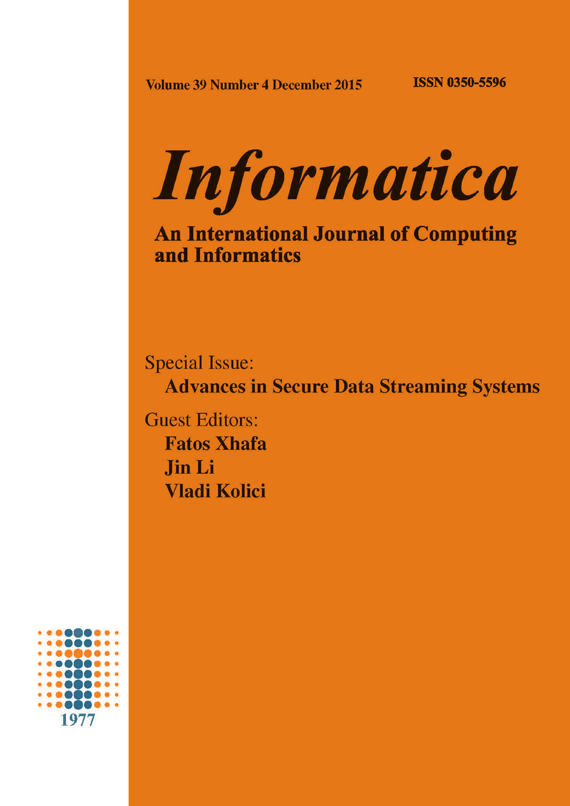An Experimental Approach to Examine a Multi-Channel Multi-Hop Wireless Backbone Network
Abstract
This paper presents an experimental deployment of a multi-channel multi-hop wireless backbone network (WBN) with an OpenFlow-based traffic management method. Specifically, a set of APs, each of which uses a single but different channel, is connected by Ethernet and thus constructs a Virtual AP (VAP), thereby achieving a WBN with multi-
ple channels. To exibly control traffic ows transmitted over a multi-channel multi-hop WBN, we propose a simple traffic management method based on the OpenFlow control. In the performance evaluation, we rst conduct a preliminary experiment as a lab scale
and then deploy a 6-hop WBN enabling to provide the Internet access service in a conference (from proof-of-concept to a practical environment). Since the control messages are inherently transmitted with the introduction of OpenFlow, the way of isolation be-
tween control plane and data plane will become a critical issue to actually deploy the proposed system for the Internet service. We additionally employ a wireless control network for the conference experiment. The experimental results show that the proposed
WBN can increase the network capacity in accordance with the number of channels, thereby providing significant throughput performance for various applications.
References
Cisco Visual Networking Index.
Global Mobile Data Traffic Fore-
cast Update, 2013-2018. http:
//www.cisco.com/c/en/us/solutions/
collateral/service-provider/
visual-networking-index-vni/white_
paper_c11-520862.pdf.
P. H. Pathak and R. Dutta. A Survey
of Network Design Problems and Joint De-
sign Approaches in Wireless Mesh Networks.
IEEE Communications Surveys and Tutori-
als, 13(3):396-428, 2011.
D. Benyamina, A. Hafid, and M. Gendreau.
Wireless Mesh Networks Design - A Survey.
IEEE Communications Surveys and Tutori-
als, 14(2):299-310, 2012.
E. Alotaibi and B. Mukherjee. Survey Paper:
A Survey on Routing Algorithms for Wire-
less Ad-Hoc and Mesh Networks. Computer
Networks, 56(2):940-965, February 2012.
W. Si, S. Selvakennedy, and A. Y. Zomaya.
An Overview of Channel Assignment Meth-
ods for Multi-radio Multi-channel Wireless
Mesh Networks. Journal of Parallel and
Distributed Computing, 70(5):505-524, May
K. S. Vijayalayan, A. Harwood, and
S. Karunasekera. Distributed Scheduling
Schemes for Wireless Mesh Networks: A Sur-
vey. ACM Computing Survey, 46(1):14:1-
:34, July 2013.
IEEE Std 802.11n-2009.
IEEE Std 802.11ac-2013.
A. Raniwala, K. Gopalan, and T. Chiueh.
Centralized Channel Assignment and Rout-
ing Algorithms for Multi-channel Wireless
Mesh Networks. SIGMOBILE Mob. Com-
put. Commun. Rev., 8(2):50-65, 2004.
P. Kyasanur, J. So, C. Chereddi, and N. F.
Vaidya. Multichannel mesh networks: chal-
lenges and protocols. IEEE Wireless Com-
munications, 13(2):30-36, May 2006.
J. So and N. H. Vaidya. Multi-channel
Mac for Ad Hoc Networks: Handling Multi-
channel Hidden Terminals Using a Single
Transceiver. In MobiHoc, pages 222-233,
A. Raniwala and T. Chiueh. Architecture
and algorithms for an IEEE 802.11-based
multi-channel wireless mesh network. In IN-
FOCOM, pages 2223-2234, 2005.
P. Dely, A. Kassler, and N. Bayer. Open-
Flow for Wireless Mesh Networks. In IEEE
ICCCN, pages 1-6, 2011.
A. Detti, C. Pisa, S. Salsano, and N. Blefari-
Melazzi. Wireless Mesh Software Dened
Networks (wmSDN). In 2nd International
Workshop on Community Networks and
Bottom-up-Broadband, pages 89-95, 2013.
M. Tagawa, Y. Wada, Y. Taenaka, and
K. Tsukamoto. Network Capacity Expansion
Methods based on Efficient Channel Utiliza-
tion for Multi-Channel Wireless Backbone
Network. In the 2014 International Work-
shop on Smart Complex Engineered Net-
works (SCENE), August 2014.
OpenWrt. https://openwrt.org/.
Open vSwitch. http://openvswitch.org/.
Trema. Full-Stack OpenFlow Framework in
Ruby and C. http://trema.github.io/
trema/.
Downloads
Published
Issue
Section
License
I assign to Informatica, An International Journal of Computing and Informatics ("Journal") the copyright in the manuscript identified above and any additional material (figures, tables, illustrations, software or other information intended for publication) submitted as part of or as a supplement to the manuscript ("Paper") in all forms and media throughout the world, in all languages, for the full term of copyright, effective when and if the article is accepted for publication. This transfer includes the right to reproduce and/or to distribute the Paper to other journals or digital libraries in electronic and online forms and systems.
I understand that I retain the rights to use the pre-prints, off-prints, accepted manuscript and published journal Paper for personal use, scholarly purposes and internal institutional use.
In certain cases, I can ask for retaining the publishing rights of the Paper. The Journal can permit or deny the request for publishing rights, to which I fully agree.
I declare that the submitted Paper is original, has been written by the stated authors and has not been published elsewhere nor is currently being considered for publication by any other journal and will not be submitted for such review while under review by this Journal. The Paper contains no material that violates proprietary rights of any other person or entity. I have obtained written permission from copyright owners for any excerpts from copyrighted works that are included and have credited the sources in my article. I have informed the co-author(s) of the terms of this publishing agreement.
Copyright © Slovenian Society Informatika








